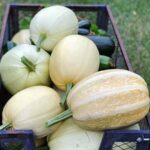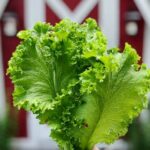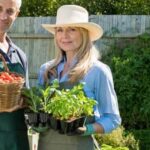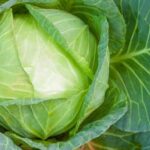Are you interested in growing your own vegetables, but think that having a small garden space might be a hindrance? Think again.
In this article, we will delve into the world of good vegetables for small gardens, providing you with all the information you need to create a bountiful and thriving garden in limited space. Whether you have a tiny backyard or just a balcony, there are numerous options available to turn even the smallest of spaces into a productive vegetable haven.
The first step in creating a successful small garden is assessing your space. Determining the perfect vegetables for your specific garden requires careful planning and consideration of factors such as sunlight, soil quality, and available room for plant growth. By understanding the unique characteristics of your space, you can ensure that you choose the right vegetables that will thrive in your small garden environment.
In order to maximize productivity in limited space, it’s important to explore efficient high-yield vegetables. These varieties are specifically bred or selected to produce abundant crops in compact areas. By focusing on these types of plants, you can make the most out of your small garden and enjoy a plentiful harvest without taking up excessive room.
In the following sections, we will discuss various techniques and recommended vegetable varieties that are ideal for small gardens. Stay tuned to discover how vertical gardening, container gardening, companion planting, and quick-growing delights can help you optimize your garden’s productivity even further.
Assessing Your Space
When it comes to gardening in a small space, it is important to carefully assess your available space before deciding which vegetables to grow. By taking the time to evaluate your garden area, you can determine the perfect vegetables that will thrive in your limited space and maximize your garden’s productivity. Here are some steps on how to assess your space and select the ideal vegetables for your small garden:
- Measure your garden area: Start by measuring the dimensions of your garden area. This will give you a clear idea of how much space you have to work with. Consider both the length and width of the available area, as well as any restrictions such as nearby buildings or trees that may cast shade.
- Determine sunlight exposure: Observe how much sunlight your garden receives throughout the day. Most vegetables require at least 6-8 hours of direct sunlight to grow properly. Take note of any shady areas or spots that receive less sunlight so you can plan accordingly.
- Evaluate soil conditions: Assess the quality of your soil, as different vegetables have different soil preferences. Consider conducting a soil test to determine its pH level and nutrient content. This will help you identify if any amendments are necessary for optimal growth.
Once you have assessed your space, you can choose the perfect vegetables that match your garden’s conditions. Here are some factors to consider when selecting vegetables for a small garden:
- Size and spacing requirements: Look for compact varieties or those that can be grown in containers to maximize space utilization.
- Vertical growth potential: Some vegetables, like pole beans or climbing peas, can be trained to grow vertically using trellises or other support structures, making them great choices for small gardens.
- Quick maturity: Select vegetables with shorter growing seasons or varieties labeled as “early” or “fast-growing” so you can enjoy an earlier harvest.
- Succession planting: Consider vegetables that can be sown successively throughout the growing season, allowing you to continuously harvest fresh produce.
By carefully assessing your space and considering these factors, you can determine the perfect vegetables for your small garden. Remember to plan ahead, make the most of vertical gardening and containers, and prioritize quick-growing varieties to maximize productivity in a limited space. With proper planning and thoughtful selection, even the smallest gardens can yield an abundance of fresh and delicious vegetables.
Efficient High-Yield Vegetables
When it comes to gardening in small spaces, maximizing productivity is key. Choosing efficient high-yield vegetables can help you make the most out of your limited garden space. These vegetables are known for their ability to produce a bountiful harvest in a small footprint, making them ideal choices for those with limited gardening space. In this section, we will explore some of the best efficient high-yield vegetables that you can grow in your small garden.
One example of an efficient high-yield vegetable is the cherry tomato. Cherry tomatoes are perfect for small gardens because they grow compactly and produce an abundance of fruit throughout the growing season. They can be grown in containers or hanging baskets, making them suitable for vertical gardening or container gardening techniques discussed earlier in this article. Additionally, cherry tomatoes are relatively easy to grow and maintain, making them a great choice for beginners.
Another excellent option for small gardens is Swiss chard. Swiss chard is a leafy green vegetable that can be harvested continuously. It grows well in containers or raised beds and doesn’t take up much horizontal space. One notable feature of Swiss chard is its vibrant and colorful stems, which add visual interest to your garden. Moreover, Swiss chard is highly nutritious and can be enjoyed both cooked and raw.
| Vegetable | Growth Habit | Yield per Square Foot |
|---|---|---|
| Cherry Tomato | Compact growth | Up to 10 pounds |
| Swiss Chard | Compact growth | Up to 4 pounds |
These are just a few examples of efficient high-yield vegetables that you can grow in your small garden. By choosing vegetables that are known for their productivity in limited space, you can maximize your harvest and enjoy fresh, homegrown produce even with a small gardening area. Experiment with different varieties and techniques to find the best combination that works for you and your garden.
Space-Saving Techniques
Vertical Gardening:
One space-saving technique that is ideal for small gardens is vertical gardening. This method involves growing plants vertically, utilizing walls, fences, trellises, or other structures as a support system. By growing plants in a vertical manner, gardeners can maximize their available space and still enjoy a bountiful harvest.
There are various ways to implement vertical gardening in a small garden. One popular method is using trellises or stakes to support climbing vegetables such as cucumbers, beans, and peas. These plants naturally tend to climb and by training them upwards, you can save valuable ground space.
Another option is utilizing wall-mounted planters that allow you to grow herbs or small vegetables vertically. These planters can be easily attached to the side of a shed or fence and provide both functionality and aesthetics to your garden.
Container Gardening:
Another effective technique for small gardens is container gardening. Container gardening involves planting vegetables in containers instead of traditional garden beds. This method allows for flexibility and enables gardeners to place their plants wherever there is adequate sunlight. Furthermore, containers can be moved around as needed, making it easier to protect plants from inclement weather or pests.
When choosing containers for a small garden, it’s important to consider the size and type of vegetable being grown. Smaller vegetables like lettuces, radishes, and herbs do well in smaller pots while larger vegetables like tomatoes may require larger pots or even buckets.
Both vertical gardening and container gardening offer practical solutions for maximizing space in small gardens. By implementing these techniques, even those with limited space can create flourishing vegetable gardens.
| Pros of Vertical Gardening | Pros of Container Gardening |
|---|---|
| Maximizes use of vertical space | Flexibility in positioning plants |
| Can be aesthetically pleasing | Easily movable for protection |
| Provides support for climbing plants | Allows for different container sizes depending on plant needs |
Must-Have Small Garden Vegetables
Must-Have Small Garden Vegetables: A Comprehensive List of Recommended Varieties
| Vegetable | Variety | Description |
|---|---|---|
| Tomato | ‘Patio Princess’ | A compact determinate variety perfect for containers and small gardens. It produces medium-sized, flavorful tomatoes. |
| Cucumber | ‘Bush Pickle’ | An excellent variety for limited spaces with bushy vines that don’t require support. It produces an abundance of crisp pickling cucumbers. |
| Lettuce | ‘Salad Bowl’ | A loose-leaf lettuce that grows quickly and doesn’t form a tight head. Its tender leaves make for fresh and tasty salads. |
These are just a few examples of the must-have small garden vegetables. Other recommended varieties include ‘Baby Belle’ peppers, ‘Sugar Snap’ peas, and ‘Babette’ carrots. The key is to look for compact or dwarf varieties that don’t require a lot of space to grow.
When planning your small garden, consider a mix of vegetables with different growth habits and maturity times. This ensures a continuous harvest and maximizes the use of your limited space. Furthermore, many of these recommended varieties can be grown successfully in containers, making them even more suitable for small gardens.
Remember to provide the necessary care and attention to your plants by providing adequate watering, sunlight, and nutrients. With proper care and the right selection of small garden vegetables, you can enjoy a bountiful harvest even in a confined space.
Quick-Growing Delights
When it comes to small gardens, sometimes you don’t have the luxury of waiting months for your vegetables to grow. That’s where quick-growing delights come in. These speedy vegetables are perfect for small gardens as they provide a satisfying harvest in a short amount of time. Whether you’re tight on space or simply eager to see results quickly, these vegetables are sure to thrive in your small garden.
Leafy Greens
Leafy greens such as lettuce, spinach, and arugula are excellent choices for quick-growing vegetables. They have shallow root systems, making them ideal for containers or raised beds. With proper care and regular watering, you can expect to harvest your first batch of leafy greens within 4-6 weeks. Alternatively, if you prefer baby leaves, you can start harvesting as early as 2-3 weeks after sowing.
Radishes
Radishes are notorious for their fast growth. They mature in just 3-4 weeks from seed to harvest, making them one of the quickest crops you can grow in a small garden. There are various varieties available with different shapes, colors, and flavors. Choose ones that best suit your taste preferences and enjoy crunchy radishes in salads or as a snack.
Microgreens
If you’re looking for an even speedier option, microgreens are the way to go. Microgreens are essentially tiny edible plants that are harvested when they are only a few inches tall and have developed their first set of true leaves. They offer intense flavor and a concentrated dose of nutrients. The beauty of microgreens is that they can be grown indoors year-round under artificial light or placed in a sunny spot outdoors during the warmer months.
Herbs and Greens
Herbs and greens are not only flavorful additions to your meals, but they also make an excellent choice for small gardeners. These plants typically don’t require a large amount of space to grow, making them perfect for those with limited gardening areas. Whether you have a balcony, patio, or a small backyard, herbs and greens can thrive and provide you with fresh flavors all season long.
Popular Herbs for Small Gardens
When it comes to growing herbs in small spaces, some varieties are more suitable than others. One popular choice is basil, which grows well in containers and adds a delightful aroma and taste to many dishes. Other versatile herbs that work well in small gardens include parsley, cilantro, mint, and chives. These herbs can be easily grown in pots or hanging baskets, allowing you to maximize your vertical space.
Leafy Greens for Limited Spaces
If you’re a fan of salads or enjoy adding nutritious greens to your meals, there are many options for small gardeners. Lettuce varieties such as butterhead lettuce and loose-leaf lettuce can be grown in raised beds or containers. Spinach is another fantastic option that doesn’t require much space and can be harvested continuously throughout the season. Swiss chard is not only beautiful with its colorful stems but also thrives in smaller gardens.
Microgreens: Perfect for Small Gardeners with Limited Space
For those who truly have limited space but still want to grow their own greens, microgreens are an ideal choice. Microgreens are young vegetable greens that can be harvested just a couple of weeks after sowing the seeds. They are packed with nutrients and offer intense flavors. Popular microgreen options include arugula, kale, radish sprouts, and mustard greens.
Companion Planting
Companion planting is a gardening technique that involves planting different vegetables together in order to maximize space and enhance growth. By strategically pairing compatible plants, gardeners can create a harmonious ecosystem in their small gardens. Companion plants can also provide natural pest control, improved pollination, and increased productivity. Here are some examples of companion vegetables that are perfect for small gardens:
- Tomatoes and Basil: Tomato plants and basil have a mutually beneficial relationship. Basil repels pests like flies and mosquitoes, which can help protect the tomato plants from damage. In return, tomato plants release chemicals into the soil that promote healthy growth in basil.
- Carrots and Onions: Planting carrots and onions together is a classic example of companion planting. Carrots benefit from the strong scent of onions, which helps deter carrot flies. Onions also help to suppress the growth of weeds, reducing competition for nutrients.
- Beans and Corn: Beans and corn are ideal companions as they support each other’s growth. Beans naturally add nitrogen to the soil, which benefits the corn plants. In return, corn stalks provide a natural trellis for the beans to climb on.
- Cabbage and Dill: Planting dill near cabbage plants helps repel cabbage worms and other pests that commonly affect cabbage crops. Additionally, dill attracts beneficial insects such as ladybugs, which prey on harmful pests.
Utilizing companion planting techniques not only maximizes space but also promotes healthier plants and higher yields in small gardens. To make the most out of companion planting, it is important to research which vegetables have compatible growing conditions and needs before planning your garden layout.
In addition to these vegetable combinations, there are many other possible pairings that can benefit your small garden. Some common examples include peas with lettuce or spinach, marigolds with tomatoes or peppers, and cucumbers with radishes or nasturtiums. Experimenting with different companion planting combinations can lead to a more productive and diverse garden, while also creating a beautiful and balanced space.
Small Garden Success Tips
Achieving success in a small garden requires careful planning and strategic techniques. With limited space, it is essential to maximize productivity while ensuring the health and vitality of your vegetables. Here are some expert tips to help you thrive as a small gardener:
- Start with the right soil: Regardless of the size of your garden, healthy soil is the key to successful vegetable growth. Choose well-draining soil enriched with organic matter, such as compost or aged manure. Regularly test and amend your soil to ensure it has optimal nutrient levels for plant growth.
- Practice intensive planting: In a small garden, every inch of space counts. Make use of intercropping and succession planting techniques to maximize yield and efficiency. Intercropping involves planting complementary vegetables together, such as tall plants that provide shade for smaller ones or crops with different root depths that utilize vertical space efficiently.
- Utilize vertical structures: Vertical gardening allows you to grow vegetables upwards, making efficient use of limited ground space. Install trellises, stakes, or fences to support climbing plants like tomatoes, cucumbers, and beans. You can also try utilizing hanging baskets or tiered planters for vining or trailing varieties.
- Embrace container gardening: Containers are ideal for small gardens as they offer flexibility in terms of location and design. Look for compact vegetable varieties specifically bred for container growing. Choose pots with drainage holes to prevent waterlogged roots and use high-quality potting mix that retains moisture while providing good drainage.
- Implement regular pruning and maintenance: In a confined space, it is crucial to manage the size and shape of your plants properly. Regularly prune overcrowded branches or foliage to improve air circulation which discourages diseases and pests from thriving.
By following these expert tips, you can achieve success in your small garden and enjoy an abundance of fresh vegetables throughout the growing season. With a little planning and creativity, you’ll be amazed at how much you can grow in even the tiniest space. Embrace the challenge of small-scale gardening and reap the rewards of your efforts.
The Pleasure of Harvest
Harvesting the fruits and vegetables from your small garden is a rewarding experience that brings joy and satisfaction. As you watch your plants grow and develop, it’s exciting to see the results of your hard work and dedication. Whether you have a tiny balcony garden or a small plot in your backyard, the pleasure of harvesting fresh produce is undeniable.
One of the benefits of small gardens is that they are more manageable, allowing you to easily monitor the growth and health of your plants. As you tend to your garden daily, checking for pests and providing water and nutrients as needed, you become intimately connected with each plant. When it’s time to harvest, you can appreciate the effort that went into nurturing each vegetable from seedling to maturity.
The taste of homegrown vegetables is unmatched. Freshly harvested produce is at its peak flavor and nutritional value, surpassing anything you can buy at the grocery store. The vibrant colors, crisp textures, and intense flavors of homegrown vegetables will delight your senses with each bite. Plus, you can take pride in knowing exactly where your food came from and how it was grown.
With a small garden, it’s important to plan your harvests strategically to make the most of limited space. You can practice succession planting, which involves planting new crops as soon as old ones are harvested. This way, you can enjoy a continuous supply of vegetables throughout the growing season.
Another approach is to practice “cut-and-come-again” harvesting for certain crops like lettuce or herbs. Instead of pulling up the entire plant at once, simply harvest what you need while leaving the rest to grow for future use.
Conclusion
In conclusion, gardening in a small space doesn’t have to limit your ability to grow an abundance of fresh and delicious vegetables. By exploring the world of good vegetables for small gardens and assessing your space, you can determine the perfect varieties that will thrive in your limited garden area. Utilizing efficient high-yield vegetables and employing space-saving techniques like vertical and container gardening will help maximize productivity.
The comprehensive list of recommended must-have small garden vegetables provides an excellent starting point for choosing the right crops for your space. Additionally, quick-growing delights that thrive in small gardens offer a way to enjoy fresh produce sooner rather than later.
For those who appreciate flavor and variety, herbs and greens are flavorful options that can be grown successfully in small spaces. And by practicing companion planting, you not only maximize space but also enhance growth by pairing compatible vegetables together.
Throughout the process of creating a successful small garden, it’s important to remember expert advice for thriving vegetation in limited spaces. From proper watering techniques to appropriate fertilization methods, these tips will ensure healthy growth and bountiful harvests.
Finally, as you marvel at your flourishing plants and enjoy the fruits (and vegetables) of your labor, take a moment to celebrate the joy that comes from gardening in a small space. The satisfaction of nurturing plants from seedlings to fully-grown vegetables is unparalleled. So let us unite as green thumbs and embrace the pleasure of gardening in even the tiniest patches of earth. Happy gardening.
Frequently Asked Questions
What vegetables are best for small garden?
When it comes to selecting vegetables for a small garden, it is important to consider space efficiency and productivity. Some vegetables that are best suited for small gardens include salad greens like lettuce and spinach, as they can be harvested continually throughout the growing season.
Radishes are another great choice due to their quick growth and compact size. Additionally, herbs such as basil, mint, and parsley can be grown in small containers or pots while still providing a bountiful harvest.
What veggies don’t need a lot of room to grow?
There are several vegetables that don’t require much room to grow, making them ideal for smaller garden spaces. One example is bush beans, which are not only productive but also take up minimal space compared to their pole bean counterparts.
Cherry tomatoes are another option as they can be grown in hanging baskets or vertically trained against a wall or trellis. Furthermore, leafy greens like kale and Swiss chard have shallow root systems and can be grown closely together in containers or raised beds.
What are the 10 easiest vegetables to grow?
If you’re new to gardening or looking for low-maintenance options, the following ten vegetables are among the easiest to grow: tomatoes, zucchini/squash, radishes, green beans, lettuce, cucumbers, peppers (both sweet and hot varieties), carrots, herbs (such as basil or dill), and onions/scallions. These crops generally have relatively short germination periods and are less susceptible to diseases and pests compared to other vegetables.
They also tend to tolerate a wider range of growing conditions and require less specialized care. With proper watering and basic gardening practices, even beginners can enjoy a successful harvest with these easy-to-grow veggies.

If you’re looking to get into vegetable gardening, or are just looking for some tips on how to make your current garden better, then you’ve come to the right place! My name is Ethel and I have been gardening for years. In this blog, I’m going to share with you some of my best tips on how to create a successful vegetable garden.





